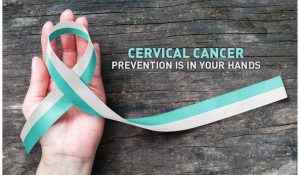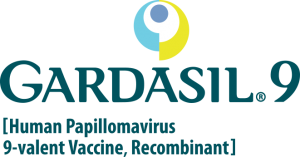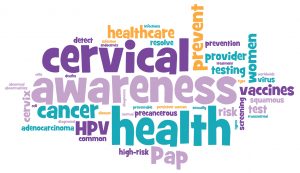Cervical cancer is a preventable cancer via the timely use of the HPV vaccine. Since HPV is the culprit causative agent for cervical cancer, prevention via early vaccination is of utmost importance.
Cervical cancer – the second most common gynecologic cancer
Cervical cancer is a common cancer affecting women of reproductive age group. In fact, it is estimated to be the third most common gynecologic cancer in the US and worldwide.
In countries where screening for cervical cancer is not a routine, it is the second most common cancer and cause of death in women.
Cervical cancer prevention requires protection from HPV via the timely use of HPV vaccine
The culprit virus strongly associated with cervical cancer is the human papillomavirus (HPV). HPV is found in 99.7% of patients with cervical cancer. Thus cervical cancer prevention requires protection from HPV via vaccination.
Most of the new cases of cervical cancer, roughly 80%, will be diagnosed in the developing countries. The incidence and mortality of cervical cancer in the developed countries has declined by 75% over the last 50 years because of routine screening programs and vaccination schedule.
Risk factors for acquiring HPV and cervical cancer include:
- Early onset of sexual activity (less than 18 years of age)
- Multiple sexual partners
- A high-risk sexual partner
- History of sexually transmitted diseases
- Immunosuppression
- History of valvular or vaginal cancer or intraepithelial neoplasia
Your naked body should only belong to those who fall in love with your naked soul.
Charlie Chaplin in a letter to his daughter Geraldine
Cervical cancer is less common in sexual partners of circumcised males. Similarly, smoking does not increase the risk of cervical cancer.
Other less validated risk factors include:
- First child-birth at a younger age
- Multiparity (more than one kid)
- Use of oral contraceptives
Prevention from HPV via HPV vaccine is prevention from cervical cancer!
There are approximately 40 HPV genotypes that infect the genital tract. Out of these 40 genotypes, eight are responsible for causing 95% of cervical cancers.
Once infected, most women clear the infection within 8 to 24 months. HPV infection and dysplasia resolve spontaneously thereafter. Persistence of infection for years leads to intraepithelial neoplasia and ultimately cervical cancer.
cervical cancer prevention – the role of PAP smear
PAP smear is used as a screening test to detect asymptomatic patients with early changes in the cervix (cervical intraepithelial neoplasia). PAP smear may be falsely labeled as negative in the following circumstances:
- Sample from the representative cervical area with changes may have not been taken
- Errors in sampling and fixing the cells
- Findings may be inaccurately reported
cervical cancer prevention – the role of HPV testing
HPV testing is evolving as a screening test in conjunction with the PAP smear. HPV testing can be considered as a screening test in resource-limited settings.
Normal PAP smear and a positive HPV testing
Patients with a positive HPV and a normal PAP smear should have a repeat test done after 12 months. Those who are negative on repeat testing can be scheduled for the routine testing. Those who have a repeat test positive for HPV should undergo colposcopy.
HPV related diseases in females
- Cervical cancer and precursor lesions.
- Vulvar and vaginal cancer
HPV related diseases in both genders
- Anal cancer
- Genital warts
HPV related diseases in males
- Penile cancer
Role of HPV vaccine in the prevention of cervical cancer and other diseases attributed to HPV infections

Gardasil is widely available and has been approved in many countries for the prevention of cervical, vulvar and vaginal cancers. The quadrivalent HPV vaccine was then approved in 2006 for the prevention of the same conditions plus additionally, it was effective in preventing anal cancers in females.
The timing of immunization:
The vaccine is most effective among individuals who have not been vaccinated.

The ACIP (advisory committee on immunization practices recommends the bivalent or quadrivalent HPV vaccines for females aged 11 to 12 for the prevention of cervical, vaginal and vulvar cancer. The ACIP recommends the quadrivalent vaccine for the prevention of anal cancer.
Immunization during pregnancy is not recommended because of limited data.
HPV vaccine is recommended for persons who are immunocompromised (as a result of infection, disease or medications) through age 26 years if not already vaccinated.
Healthcare workers are not at increased risk of acquiring HPV related diseases so age-specified recommendations are followed.
HPV Vaccination schedule
- The bivalent (cervarix) is administered in three doses at time zero, and at one month and six months follow up.
- The quadrivalent vaccine (Gardasil) is administered in three doses at time zero and at two and six months follow up.
In case of an interruption in the schedule, vaccination should be resumed without restarting the series.
HPV vaccination is safe and adverse effects are similar to other vaccines except for a slightly higher incidence of syncope and venous thromboembolism.
Gardasil 9 (HPV 9 valent recombinant vaccine) for use till 45 years of age

The U.S. food and drug administration approved a supplemental application for Gardasil 9 (HPV 9 valent vaccine, recombinant) expanding the use of the HPV vaccine to include both genders aged 27 through 45 years.
Gardasil, a quadrivalent vaccine (covers only 4 HPV types), was approved in 2006 but is no longer distributed in the U.S. In 2014, Gardasil 9 was approved for use in males and females age 9 through 26 years.
The approval of Gardasil 9 in people age 27 to 45 years was based on a recent clinical trial on 150 men, 27 through 45 years of age. The results validated the efficacy and immunogenicity of Gardasil 9.
The most common adverse effects of Gardasil 9 included injection site pain, swelling, redness, and headache.

